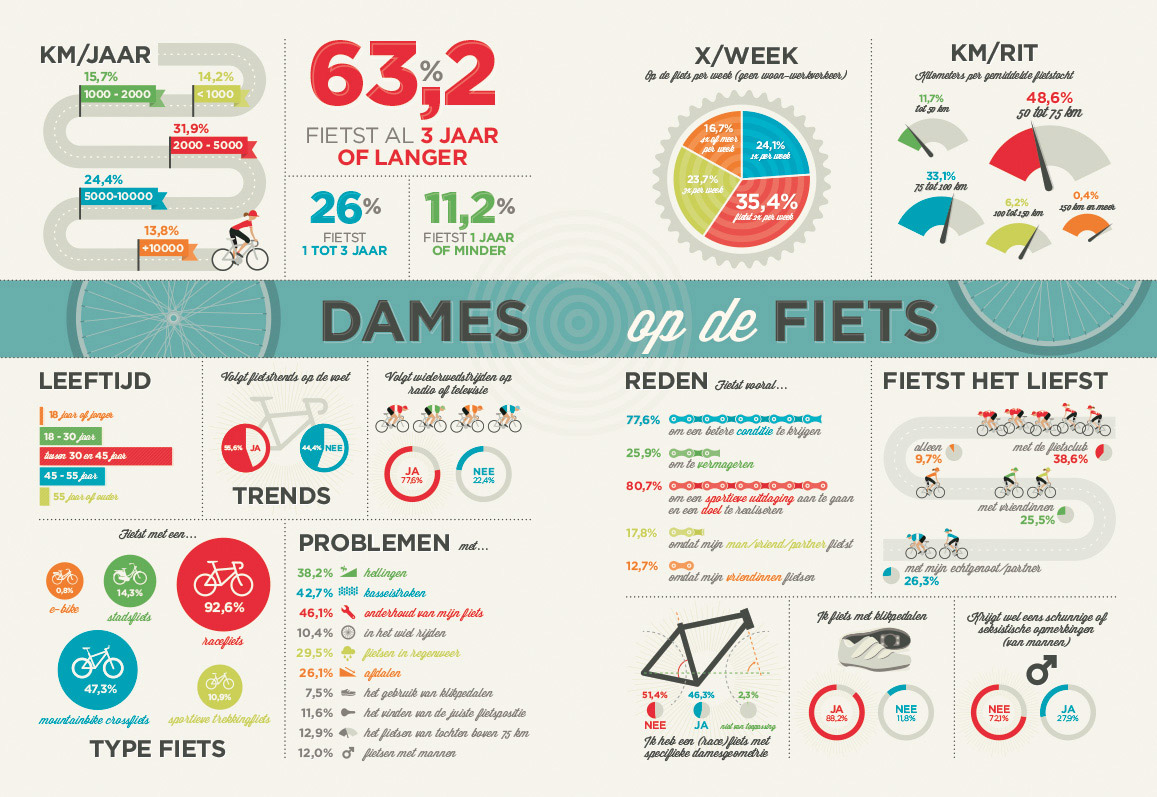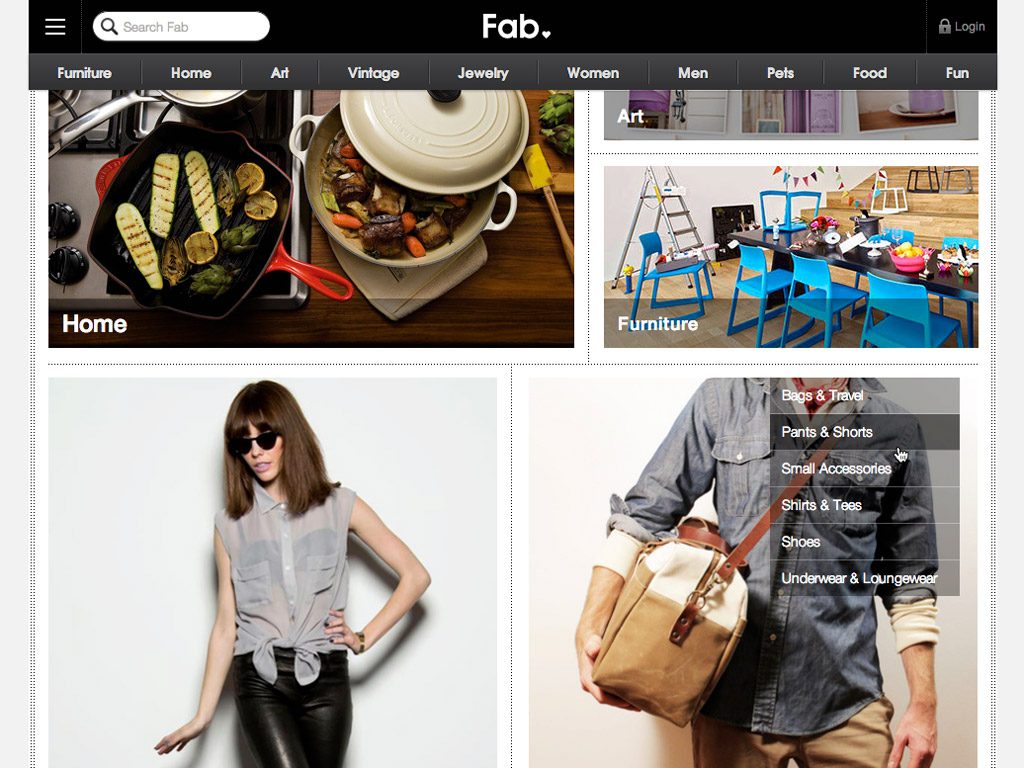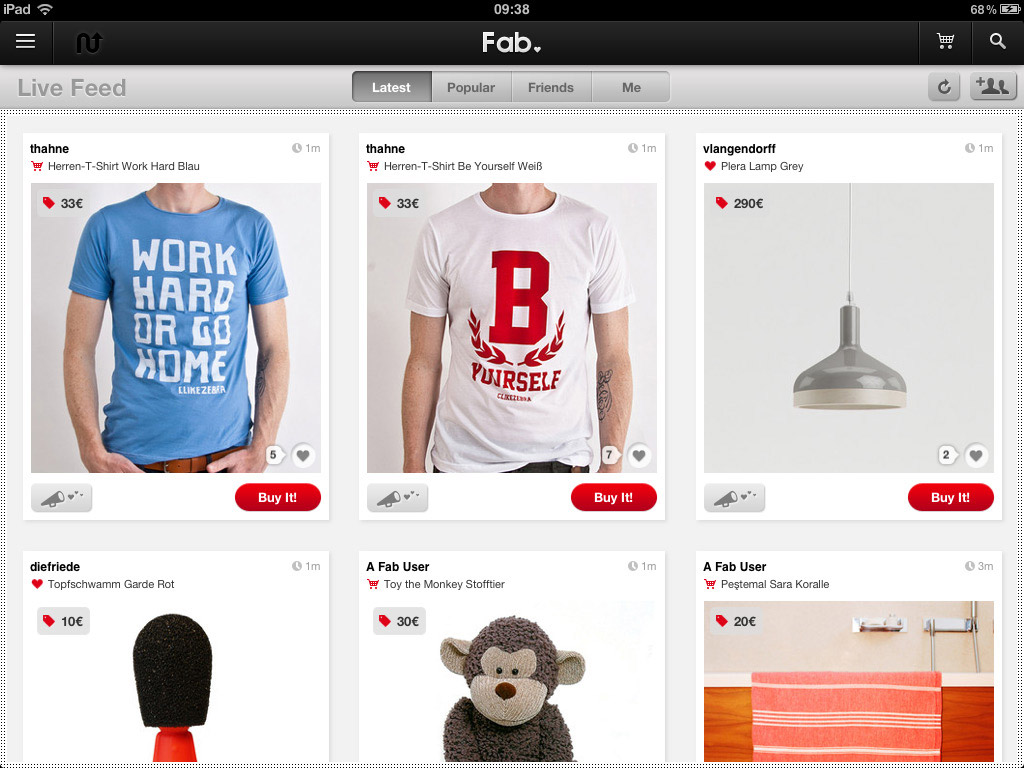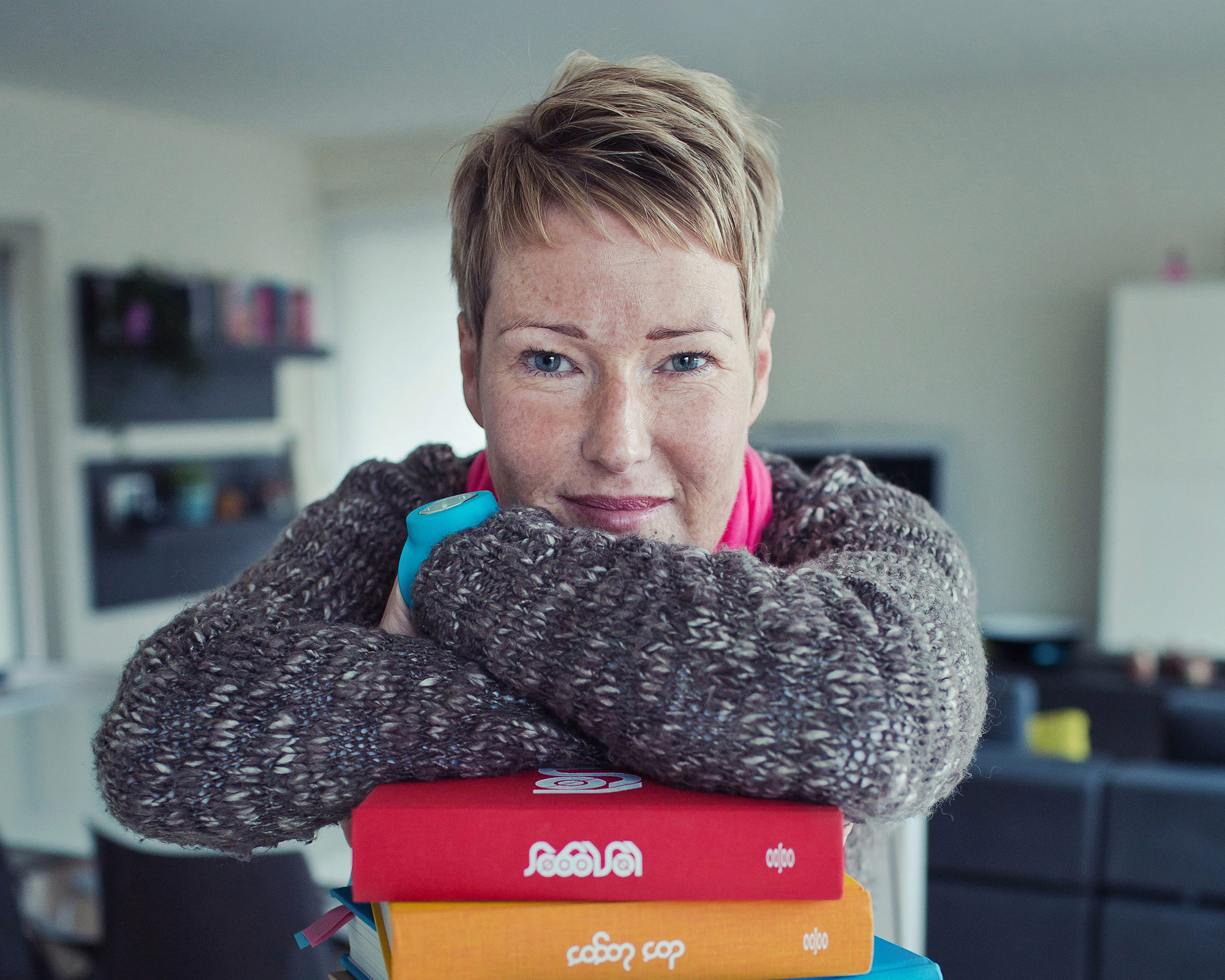
- Interview by Ryan & Tina Essmaker May 28, 2013
- Photo by Jef Boes
Veerle Pieters
- designer
- developer
- illustrator
Born on the Belgian coast, Veerle Pieters is a graphic designer who now lives in Deinze. Her career began in 1992 as a one-man business with a focus on logos, stationery, and brochures. In 1995, she added website design, user interfaces, and multimedia development work. Duoh! became an official legal entity in 2000 and is now the studio of Veerle and Geert Leyseele, who are partners in work and life.
Interview
Describe your path to becoming a graphic designer.
It took me a long time to figure out what I wanted to become, but I think my path started during my childhood years. I’ve always loved drawing, but as I grew up, I viewed it as more of a hobby. I didn’t link it to a profession, especially in my days—that makes me sound very old. (laughing) Because I didn’t know there was such a thing as a graphic designer, I associated drawing with art and never saw myself becoming an artist. I originally studied tourism in high school because we had to choose a specific area of focus. Later on, my sister’s friend, whose parents owned an ad agency, suggested that I try to become a graphic designer. Before that, I didn’t even know such a role existed. I researched two schools that offered a graphic design degree; one school had more of a fine art focus and the other had more of a print focus. I chose the latter school. At first, I struggled in the program because other students had more experience and all the techniques were new to me. But I learned and graduated with a diploma in graphic aesthetic. That’s when I knew that this was it and I really went for it.
My time in school was all pre-desktop publishing and pre-web. Later, when the Internet came along, I was intrigued. At first the Internet was all text-based, so I didn’t make the link to my profession, but all of a sudden, it evolved graphically. Web design was becoming part of my profession, so I decided to look into how a web page was built, starting with code.
After I graduated, I looked for a job for a year. Agencies told me that I had nice work, but they were all looking for someone with more experience. Not only was it hard to get a job, but I was impatient. I gave myself a deadline and decided that if I couldn’t find a job in a certain amount of time, I would make the jump into freelance. If I had realized back then what it meant to be self-employed, I don’t know if I would have had the guts to do it—I guess it was a good thing that I didn’t know. I was just so enthusiastic to get started. In Belgium at that time, the process to become self-employed required completing paperwork that took weeks to file. I started filing the paperwork and in the middle of the process, I got a call from the last employer I interviewed with. They asked if I was still interested in the job because they needed a second person. At that point, it was too late. I had already decided to work as a freelancer. It’s funny to think I could have gone in a completely different direction.
Most of what I do today is self-taught. When I first started working, Photoshop and Illustrator weren’t invented yet and the Internet wasn’t around. There were a few Macs, but the only programs on them were MacDraw and MacPaint. (laughing) In fact, when I was in school, I was the odd one in the class because I was the most enthusiastic about using the computer. The other students preferred paper and pencil. It’s so strange to talk about this—it feels like ages ago! Anyway, after I graduated, I had to learn Illustrator, Photoshop, and Quark Xpress on my own and because of how quickly things have evolved, I’ve continued to teach myself over the years.
You’ve been working as a freelancer since the beginning, then?
Yes. I’ve been working for myself since August 1992; I don’t know how to work for a boss. (laughing) The first five years were really, really hard and I thought of quitting several times. Back then, I had to go around to companies and present myself to get work, but I wasn’t very good at selling or promoting myself. I also looked very young and sometimes people questioned me because I looked like a school kid. I would often go to 30 companies in the morning to hand out my business card and show my small portfolio, and would only get one call back. It was hard to convince people to hire me because my portfolio work was from school and was mostly small print stuff like logos and business cards. I designed a lot of brochures and slowly built up my portfolio over time.
You know, I have to tell you that the design work itself was also very different in the beginning. I had a black and white printer and had to do all kinds of tricks to make work look good. I used paints for color, glued paper together, and used Letraset transfer lettering. Color printers came later and then I had to go to a print shop with my diskette to print out designs. It was all very time-consuming.
For those first few years you were building your business and doing a lot of hands-on work. How did that transition into doing more web-based work?
Well, around 1994, I got to know Geert. He has always been a visionary and he’s also my life and work partner now. When we met, he had his own full-time job, but was very interested in my work. I remember when he came over to the computer and said, “Ah, how does this work?” I replied, “This is the mouse and the pointer and you have to click here.” He didn’t know anything and now he knows way more about computers than I do. (laughing) We got a subscription to the Internet and Netscape wasn’t even out yet. Geert had the idea that I should look into how pages were built on the web. It was late 1995 when I started to look into code design for the Internet. The first client I had was from the US and the second was from Taiwan. Then I started to blog and that grew and grew and grew.
Ryan: I religiously followed your blog along with the blogs of Jeffrey Zeldman, Dan Cederholm, and Doug Bowman. You were blogging constantly and it was great for people who were getting immersed in web design and code.
The first blog I had was experimental. It was more similar to a diary post and I had five visitors a day. Then I heard about CSS and thought I could use it to design a blog. I was so excited about it that I shared my process. From a designer’s point of view, code can be intimidating, so I decided to explain the steps simply from beginning to end. I did a tutorial series that got picked up by Zeldman and Douglas Bowman, who were really big names. I thought, “Wow, they are linking to it!” That pushed me and one thing led to another. I kept posting and people were interested in what I was sharing. It’s funny because people here in Belgium told me it wasn’t smart to share my knowledge, but I saw it differently. When I share, I get so much more back than I give; that’s my perspective on it.
You already talked about your love of drawing. Was creativity a part of your childhood in other ways, too?
Yes. I created little dolls out of stones. (laughing) My dad was a fish farmer, so we had a big pond and around the edges of the water, there were stones, which were very round and nicely shaped. I painted the stones to form a body, head, and feet that I glued together. I also stapled paper together to create little books of games or puzzles. That was my thing—creating books with text and drawings.
Tina: Back to the rocks—I did a similar thing, except I painted rocks to look like animals. I wanted more pets, but wasn’t allowed, so I made pet rocks. (laughing)
That’s funny. I made a whole collection of those stone dolls and was very attached to them at first. My mom told me I should sell them, but I said, “No, they’re mine. I want to keep them.” I even gave them names. It’s too bad I don’t have them anymore; they got broken when we moved.
Tina: Did you have art classes in school or anything?
No, not until I was 19. Then I chose the direction of graphic design. Before that, I studied tourism and spent a year doing public relations and communication. I figured I would learn languages and, because the study was general, I could go in any direction I wanted. I did a year and then heard about the graphic design school, looked into it, and thought, “Yes, this is it!” But up until then, art had just been a hobby.
Ryan: How does the school system in Belgium work when you’re younger?
In high school, from ages 15 to 18, you pick an area of study. I chose tourism.
Ryan: So it’s a focused study during that time?
Yes, but I don’t know what it’s like now. They are changing the education program to give people more choices and an opportunity to explore different areas of interest.
Tina: I think it’s difficult because you don’t necessarily know what you want to do when you’re that young, but there’s so much pressure to choose, even here in the US.
That’s what they’re trying to solve now. In my time, it was really hard to move from one area of study to another.
“At first the Internet was all text-based, so I didn’t make the link to my profession, but all of a sudden, it evolved graphically. Web design was becoming part of my profession, so I decided to look into how a web page was built, starting with code.”
Did you have an “aha” moment when you knew that graphic design was what you wanted to do? Was it the moment you already talked about when you were told about the graphic design course?
Yes, I think so. Once I was actually in school for a few weeks, I knew. But it was still intimidating because classes were moving so fast and teachers didn’t hold your hand. Also, a lot of the other students had talent that I saw immediately and I didn’t make nice work at first because I didn’t have the skills. I gave myself a test and said, “If I pass this class, I know I’m headed in the right direction and I’ll stay in the program.” I didn’t think I would ever be able to do the assignments, but I stayed anyway. We had to do these technical drawings with ink and one mistake meant that hours of work were destroyed. I knew that if I could do that assignment, I could make it.
Have you had any mentors along the way?
My layout teacher during my last year of school was a good mentor because he saw the potential in me, unlike some of the teachers I had the year before who told me I wasn’t good enough. I didn’t have one particular mentor though.
Ryan: When you started your business, was it just you on your own without anyone to consult?
Yeah. In a way, Geert is my mentor because he motivates me to keep on going.
Ryan: You and Geert run your studio, Duoh!, together. Tina and I also work together and are always interested to hear how other couples work it out.
At first, it was difficult to divide what we were going to do because our jobs aren’t separate; they blend a lot with each other. When we work, we have our headphones on, which feels isolating even though we’re together in the same room. This way we give each other space when we need it or when we don’t want to be disturbed. Humor is also important. Sometimes we act like silly kids. We don’t have kids of our own, but sometimes we act like each other’s kids. (laughing) Geert and I have lots of common passions outside of work, too. We both like cycling; Geert gave me the cycling bug. (laughing) It’s an ideal sport to empty your head and enjoy the scenery as you ride.
Has there a point in your life when you decided to take a big risk to move forward?
I’m not really a risk-taker, but the biggest risk I took was deciding to go freelance in the beginning. At the time, though, I didn’t realize it was a big risk. I had a lot of people promising me work and I was a bit naive to believe them. A lot of them did give me work, but many didn’t. In my enthusiasm to get started, I didn’t realize what I was getting myself into. Before that, my plan was to work a couple years at an agency, get experience, and then go out on my own—but things turned out differently.
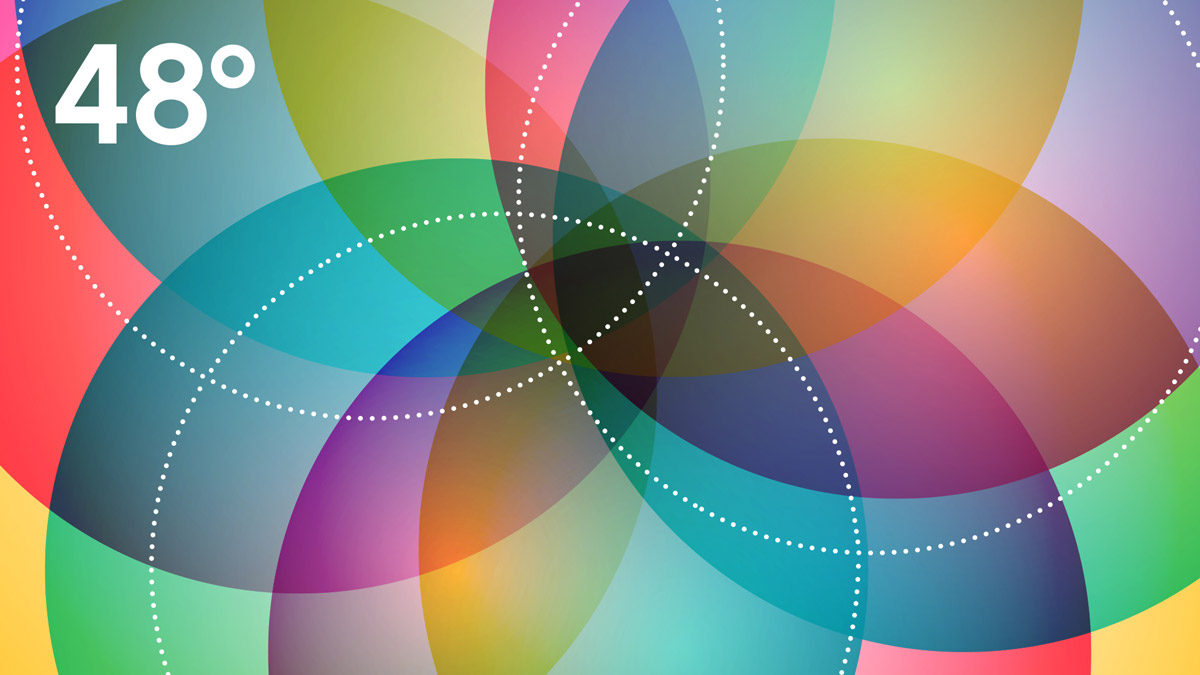
“I think it’s typical to be hard on yourself and your work. You wonder, ‘Is this good enough?’ There’s always some skepticism and dissatisfaction.”
Are your family and friends supportive of what you do?
Yes. It’s not that I wouldn’t have been able to do it without them, but thankfully, I could always count on them. My parents were more of the attitude that, “You do what you think you need to do.” They were not really encouraging me. Apart from the financial side, I was actually on my own. They were also not saying, “Are you sure? Be careful.” In a way, I wish they had been like that. Sometimes, I think you need to be warned and have a little fear.
Do you feel a responsibility to contribute to something bigger than yourself?
I try to do that with my blog because the blog made me who I am now. Because of the hard work I put into it, I can now enjoy doing projects that I love to do. I’m so grateful for all the readers who supported my blog and I feel a responsibility to give back to them.
Are you satisfied creatively?
Yes, but there is always a little part of me that isn’t. I think it’s typical to be hard on yourself and your work. You wonder, “Is this good enough?” There’s always some skepticism and dissatisfaction.
Is there anything you’re interested in doing in the next 5 to 10 years?
I’ve always dreamt of doing type design, but I know it’s really, really hard and is such a speciality. I had to design a font for a book project called Creative Grab Bag, but I’m not sure if you can actually call it a typeface; it’s more of a sketch. The idea was that each designer stepped out of his or her comfort zone, and created something that wasn’t typical of their day-to-day work. I don’t know if I’ll ever design a typeface. I do enjoy the variety of work I do right now, though. I do illustration work, logo design work, web design, iPhone and iPad apps, and even some front-end coding.
In school, I actually dreamt of becoming a package designer. I had a CV printed out on a flat sheet of carbon paper that could be folded into a cube. Each side of the box included my personal details and skills. I got good reactions from that, but it didn’t get me any work. People just said, “I remember you from the box.”
If you could go back and do one thing differently, what would it be?
I would make sure to be more informed about becoming self-employed, although it probably would have scared me off. In a way, I feel like I wasted the first five years of working because I didn’t earn a thing and it was a struggle. The only positive side was that I had a lot of time to improve my skills and experiment. On the other hand, maybe I wouldn’t be where I am now if I hadn’t done that. So maybe it was a good thing. Also, I’m proud that it worked out and I made it. I guess that instead of changing my decisions, this would be more like advice that I would give to others—make sure you are informed and have a business plan.
“…keep on learning. Take time to experiment. That is hard, but very important…Reserve time to do something not work related, but creative, even if it’s 15 minutes a day.”
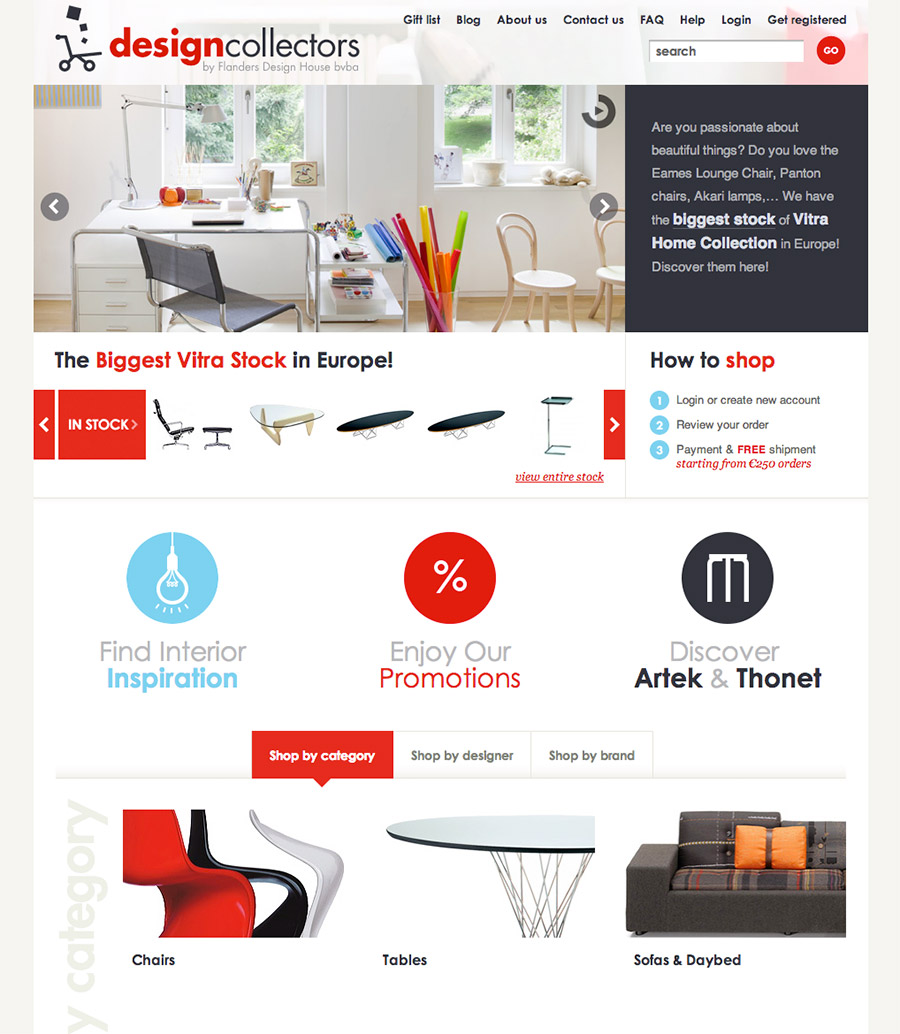
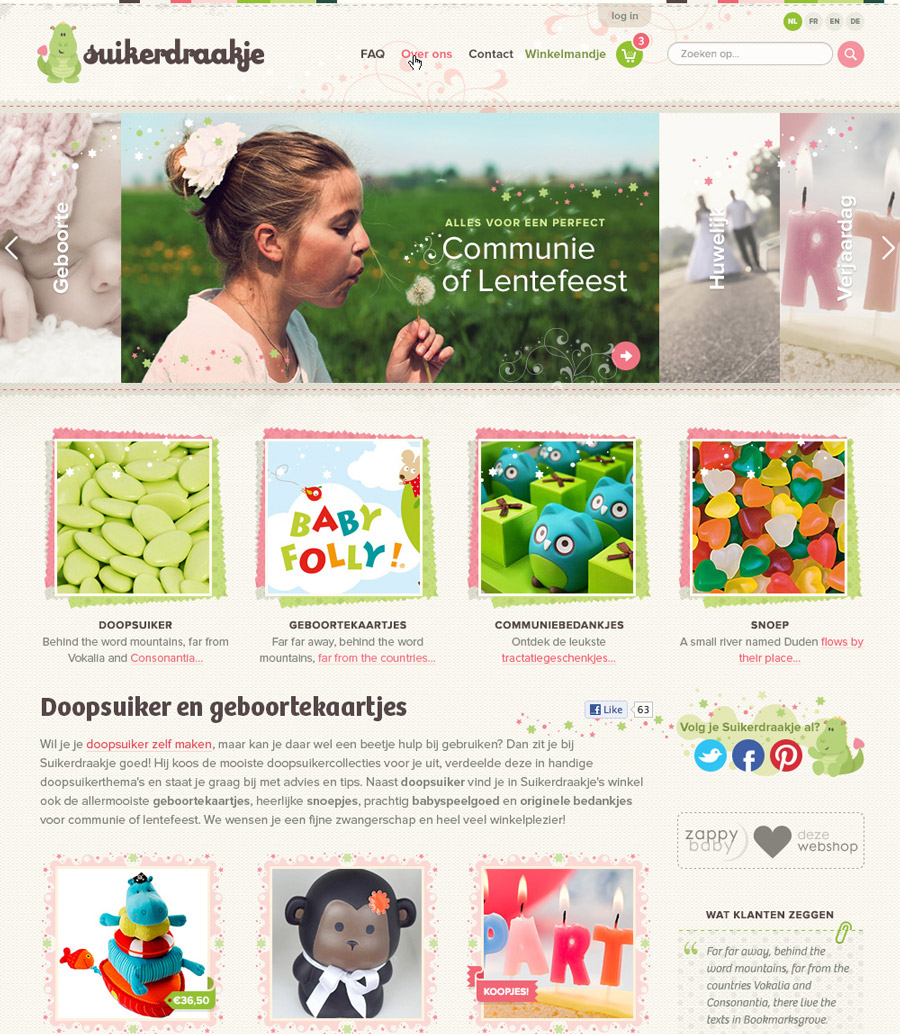
That’s actually our next question. If you could give advice to another designer starting out what, would would you say?
Inform yourself, especially about the financial part. Make sure you have some savings because it’s a bumpy ride in the first few years. Make sure you have good visibility on the web and that people can see your portfolio. Have a Dribbble or Béhance account if possible so that you can share your work—sharing is very important. If you know contacts who will hire you or projects you can work on, make sure you have that in writing; that will give you some certainty that you’ll have enough work to get started.
The other advice is to keep on learning. Take time to experiment. That is hard, but very important. If you’re more of a front-end dev, play with CSS; if you’re a designer, sketch and share stuff. Reserve time to do something not work related, but creative, even if it’s 15 minutes a day.
How does where you live impact your creativity?
The scenery gives me inspiration. If I go cycling, I always take photos and put them on Instagram. That’s if the weather is good—spring hasn’t been treating us well so far.
Ryan: Does it get really cold and hot or stay mild?
Our winters are not like the Scandinavian ones. It’s normally mild, but this year we had a really tough winter that lasted till end of April. We still had snow in April, which is not normal.
Tina: Are you near a city or in the country?
In the country. We live in a little village that is part of a larger city. Still, it’s small; all our cities are small compared to US cities—of the 134 cities, only seven have more than 100,000 inhabitants. The city that we’re part of has 30,000 inhabitants. There are around 1,300 people in our village. It’s nice, though, because we have a pharmacy, bakery, butcher, and grocery store.
Is it important to you to be part of a creative community of people?
I think the community I’m part of is the Internet in general. I also meet people at conferences, but locally, there isn’t a community.
Tina: Do you go to conferences often?
I haven’t gone in a couple years because I’ve been keeping it low-key. Geert and I used to go to SXSW and a few other conferences every year—we went to conferences instead of going on holiday. I used to speak often, but it became stressful. I was jet-lagged, had to speak, was stressed because I was speaking, and it became too much; I got burned out. All of that was before cycling. Once I started riding, that helped me feel much better and I found the balance between work and life again. After that, I decided to slow down in terms of conferences. Going to conferences and seeing friends while we were there was our holiday, but now we take a proper one. I do miss visiting our friends, who live all over the world, but we’ll see each other again.
What’s tough about burnout is that it doesn’t happen from one day to the next. You don’t wake up and think, “Whoa! I’m burned out.” It slowly creeps into your body. I’m now past 40 and I can feel it. When I was in my mid–30s and traveling, it was okay still, but now my body needs more time to adapt. The last event I spoke at was An Event Apart in Boston and I didn’t feel fully adapted until we were ready to go back home; it took me a few days longer than years before. That was a fun conference, though.
What does a typical day look like for you?
Oh, that’s hard because every day is so different. I start by having my breakfast. Unless I have something to finish up from the day before, I open my email and go through the most important ones. Then I do some work before going through the rest of my emails. If I’m working on something and don’t feel creatively inspired, I jump to another project. Unless a project is going well or I need to finish it up, I don’t work on one thing for hours. I usually switch from email to work to surfing the web. Sometimes I have to slap myself to stay focused because I have so many tabs open on the computer. (laughing) The only thing set in stone is my date with my bicycle three times a week, no matter what—no excuses.
What is your current album on repeat?
I’m a big, big fan of Jaidene Veda. Thanks to Facebook I got to know her in person because she came to visit me in Belgium. She is from Canada and has a beautiful voice. I have a post on my blog about albums that inspire me. All five albums on that page are my favorites, but Jaiden is the best.
Do you have any favorite TV shows or movies?
I’ve been enjoying Homeland and Lilyhammer a lot. I like The Mentalist and Castle. I’m not very up to date on movies, but I liked the last two that I caught on television, Stolen and Taken. My favorite movies are Amélie and Le fils de l’épicier.
I’m into Scandinavian crime. There are a couple of them on Belgian TV that I love because they’re always really good nail-biters. My absolute favorites are Stieg Larson’s Millennium series and The Killing. I also very much enjoy the Swedish Wallander and Varg Veum as well as British crime like Sherlock Holmes and Inspector George Gently, and British humor á la The Office and Monty Python. (laughing)
Your favorite book?
That’s hard. I’m currently reading a series, which is good, but not so good that I can’t stop reading. I really like Pitbull by Deflo.
Your favorite food?
Belgian cuisine—it’s the first thing I miss when I’m abroad. Belgians are very much into food and I’ve been called a foodie quite a few times by friends from the US. A close second is Italian. I love pasta, which is a good thing when you are a cyclist.
What kind of legacy do you hope to leave?
I’d like to be known as someone who loved to share her work and experiences, someone who shared things that inspired people, and someone who was cheerful. I’d also like to be someone who convinced people to get on a bike and go cycling.
